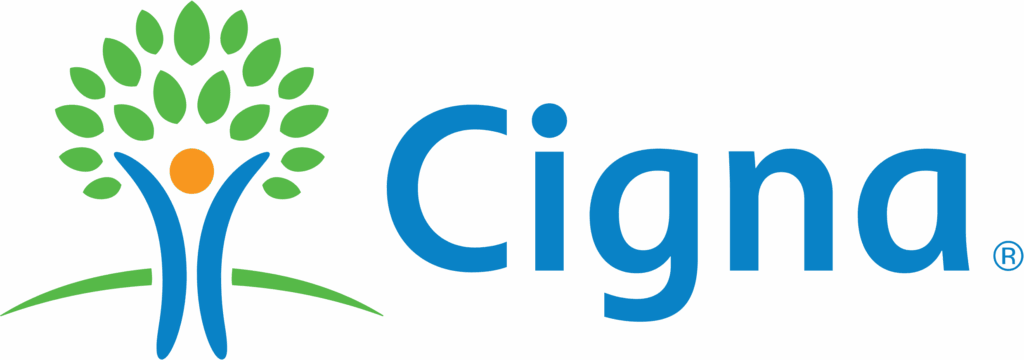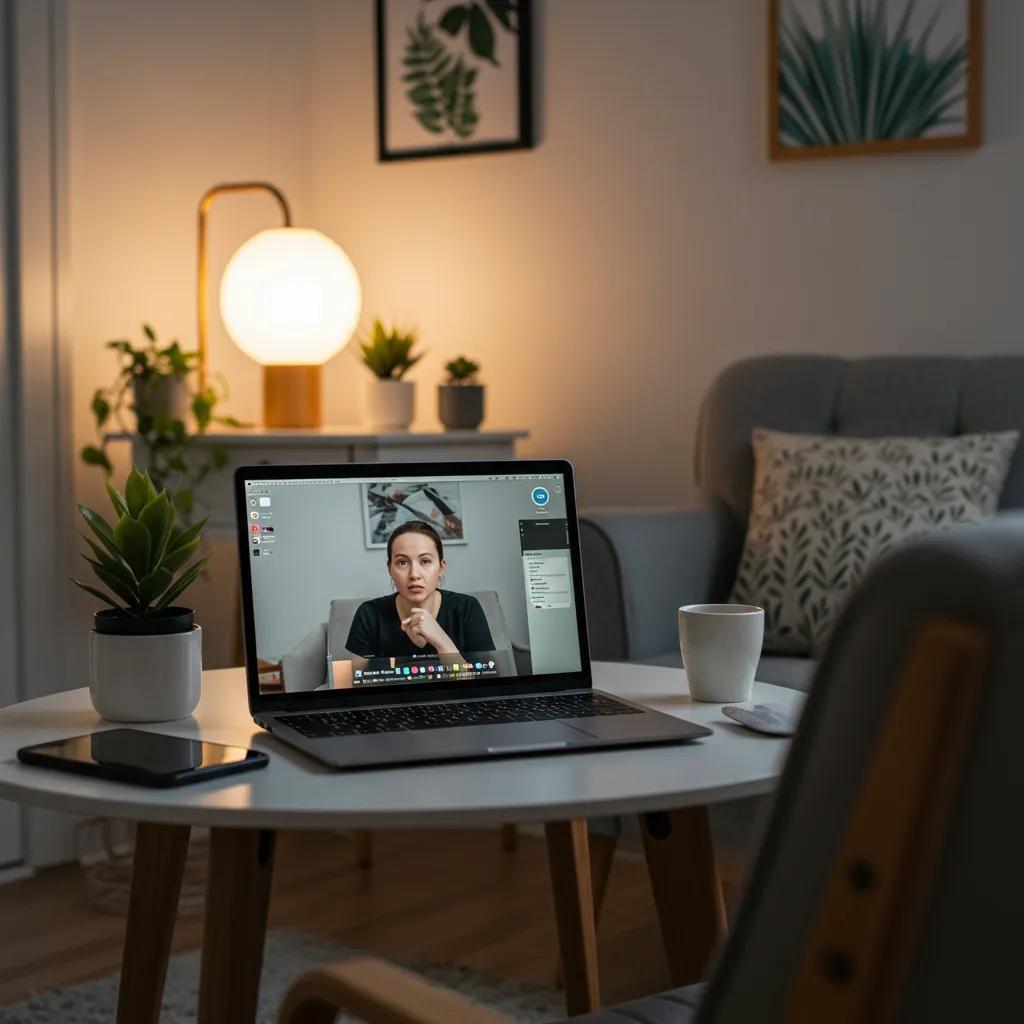

Medical Director, Compassion Recovery Center

Licensed Psychologist (LP), Compassion Recovery Center
Taking the step towards recovery from drug or alcohol addiction is one of the bravest decisions anyone can make. While many people associate recovery with inpatient treatment centers, a significant part of the journey happens after initial treatment, or sometimes, begins right at home with the right support. This is where the concept of creating a sober living environment becomes crucial. Your home, the place where you spend most of your time, can either be a challenging battleground filled with triggers or a safe, supportive sanctuary that strengthens your resolve and aids your healing.
A sober living environment at home isn’t just about removing substances; it’s about intentionally designing your physical space, establishing emotional support systems, and setting clear boundaries to actively support your recovery journey. It’s about transforming your personal space into a foundation for a new, healthier life. This is especially relevant in today’s world, where flexible and accessible treatment options like remote rehab and telehealth services are more available than ever, particularly for individuals in areas like Orange County, California.
For those managing work, family responsibilities, or other commitments, the idea of entering a residential facility can feel overwhelming or even impossible. This is precisely why creating a supportive environment at home, combined with professional remote support, offers a powerful pathway to sobriety. It allows you to stay connected to your life while receiving intensive care and guidance.
In this comprehensive guide, we will explore what a sober living environment truly means, why it’s so important for long-term recovery, and the specific steps you can take to create and maintain one in your own home. We’ll delve into the key physical and emotional elements, discuss practical strategies for identifying and removing triggers, and emphasize the vital role of integrating professional support, including remote treatment options like virtual IOP and telehealth addiction treatment. We will also look at how technology can be a powerful ally, how to involve your loved ones, strategies for staying motivated, and how to navigate potential obstacles. Our goal is to provide you with the knowledge and tools to build a home environment that not only supports your sobriety but fosters growth, peace, and lasting recovery.

What does it mean to create a sober living environment? At its core, a sober living environment is a space free from alcohol and drugs, where individuals actively work towards maintaining sobriety and supporting their recovery journey. While often associated with structured group homes, the principles of sober living can and should be applied to one’s personal residence, whether you live alone, with family, or with roommates.
It’s more than just the absence of substances. A true sober living environment is one that proactively supports a lifestyle change. It’s a place where recovery principles are valued, healthy habits are encouraged, and triggers are minimized. It’s a physical space combined with an emotional and social atmosphere conducive to healing and growth.
The benefits of maintaining sobriety at home, particularly with the support of remote treatment programs, are numerous. For many, it allows them to remain connected to their support network of family and friends, which can be a significant source of strength. It enables individuals to continue working or attending school, maintaining a sense of normalcy and responsibility that is vital for building a stable, sober life. It can also be a more affordable option compared to inpatient care, especially when utilizing insurance benefits for telehealth services.
Staying at home also provides a real-world setting to practice coping skills learned in therapy. Instead of being in the controlled environment of a residential facility, you face daily challenges – stress from work, relationship dynamics, boredom, or difficult emotions – and learn to navigate them without turning to substances. This practical application is invaluable for building long-term resilience. With Virtual IOP Program or other forms of telehealth addiction treatment, you get expert guidance while living through these experiences in real-time.
However, creating and maintaining a sober living environment at home also comes with significant challenges. Familiar surroundings can be laden with memories associated with substance use. Old habits, routines, and social contacts that were part of active addiction may still exist in or near the home. Family dynamics, if not addressed, can also pose difficulties. Without the 24/7 structure and supervision of residential treatment, individuals must rely more heavily on their own self-discipline, their support network, and the structure provided by their remote treatment program.
This is why intention and strategy are key. Simply deciding to stop using substances at home is a start, but actively creating an environment that supports that decision through physical changes, emotional work, and professional backing is what makes it sustainable. Understanding these benefits and challenges is the first step in building a home that truly serves as a foundation for lasting recovery.
Creating a thriving sober living environment requires attention to several key elements. It’s a holistic process that involves transforming not just your physical surroundings, but also the emotional and relational dynamics within your home.
Your physical environment has a profound impact on your mental and emotional state. A cluttered, disorganized, or unclean home can contribute to feelings of stress, anxiety, and overwhelm – emotions that often trigger substance use. Conversely, a clean, organized, and peaceful living space can promote calm, clarity, and a sense of control.
Think about the feeling you get when you walk into a calm, well-ordered room versus a chaotic one. The physical environment affects your inner state. Taking the time to declutter, clean regularly, and organize your belongings is a concrete way to invest in your well-being. This process isn’t just about tidiness; it’s about creating a physical representation of the order and clarity you are striving for in your life. Removing items associated with past substance use is a critical part of this physical cleansing. This might include old bottles, paraphernalia, or even items of clothing worn during periods of active addiction. Making your home a place where you feel comfortable, safe, and focused is essential for maintaining sobriety.
Consider designating specific areas for activities that support your recovery, such as a quiet corner for meditation or reading, a space for engaging in hobbies, or a comfortable spot for participating in Virtual IOP Program sessions or online support groups. Making your home a place you want to be, rather than a place you want to escape from, is a powerful tool.
Recovery is not meant to be a solitary journey. Isolation is a common trigger for relapse. Building and nurturing a strong network of emotional support is fundamental to creating a sober living environment at home. This network can include understanding family members, supportive friends, fellow individuals in recovery, a sponsor, and mental health professionals.
Ensure the people you spend time with in your home are supportive of your sobriety. This might mean spending less time with individuals who are still actively using or who don’t respect your decision to be sober. Conversely, actively seek out positive relationships. Connect with people who uplift you, understand the challenges of recovery, and encourage your progress. This could involve attending recovery meetings (online or in person), joining support groups, or simply spending quality time with trusted loved ones who champion your sobriety.
Open communication with your support network is key. Share your struggles, your successes, and your needs. Let them know how they can best support you. For family living in the same household, establishing healthy communication patterns and mutual understanding is vital. Sometimes, this may involve professional guidance, such as through Virtual couples counseling rehab or family therapy, which can be accessed remotely.
Boundaries are the guidelines you create to protect your recovery. In a sober living environment at home, this means establishing clear rules for yourself and others in your household regarding substance use. Ideally, this means making the home a completely substance-free zone for everyone living there. If others in the household do not have substance use issues, clear agreements about where and when substances can be consumed (if at all) and how they will be stored (out of sight, locked away) are absolutely essential, though a fully sober home is the safest option.
Setting boundaries also extends to visitors. Be clear with friends and family about your home being a sober space. You have the right to ask people not to bring alcohol or drugs into your home and to ask them to leave if they cannot respect this boundary. Protecting your environment is protecting your recovery.
Beyond physical boundaries related to substances, establishing healthy routines is a crucial element of a sober living environment. Addiction often thrives in chaos and unpredictability. Creating structure through daily routines provides stability and helps prevent boredom and idleness, which can be triggers. This could involve setting regular times for waking up and going to bed, scheduling meals, allocating time for work or productive activities, planning for recovery activities (therapy sessions, meetings), incorporating physical activity, and setting aside time for hobbies and relaxation.
Routines help replace old, unhealthy patterns with new, positive ones. They provide a sense of purpose and forward momentum. Working with a therapist or recovery coach, often through Intensive Outpatient Program (IOP) or telehealth services, can help you identify areas where structure is needed and develop routines that support your specific recovery goals.
By addressing these key elements – the physical space, emotional connections, and clear boundaries and routines – you build a robust foundation for maintaining sobriety within your own home environment. It’s an ongoing process that requires conscious effort, but the rewards for your recovery are immeasurable.
Use our quick & easy insurance verification to find out if you’re covered for our centers. We accept all major insurance.
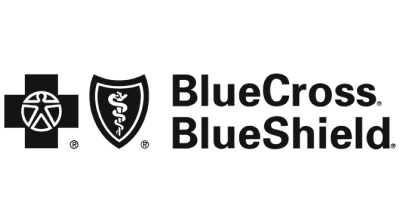


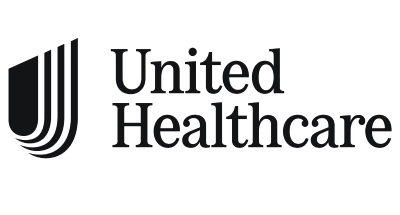
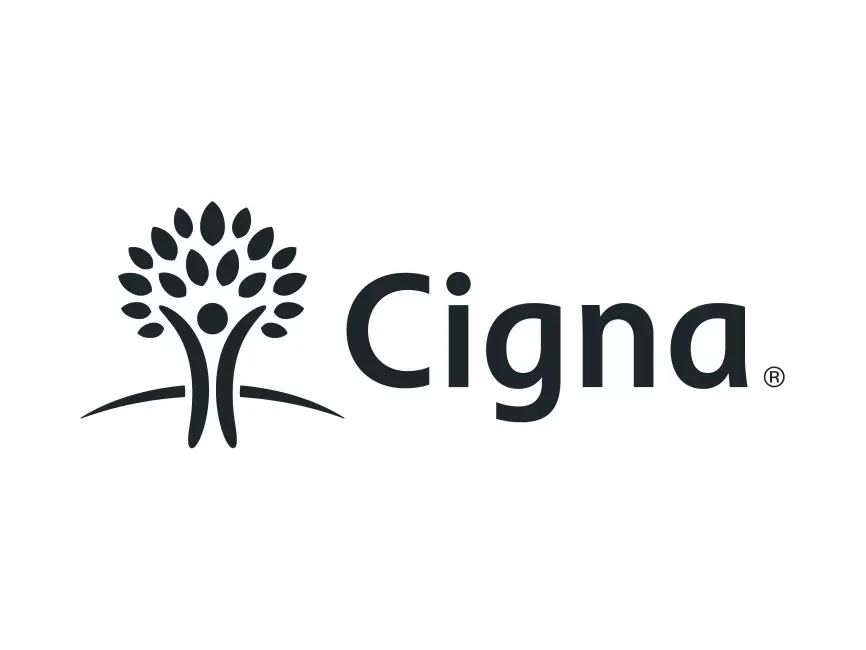
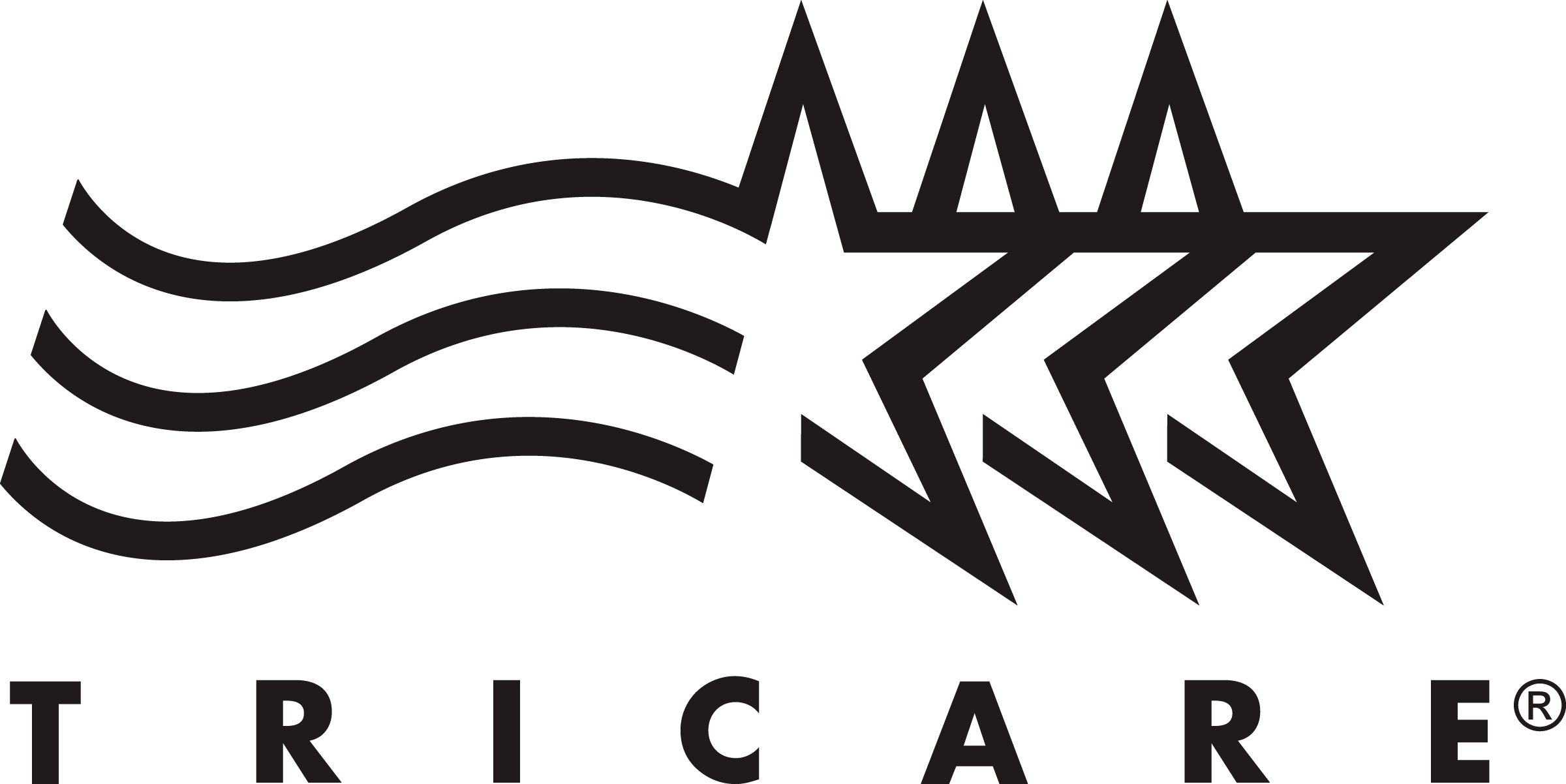
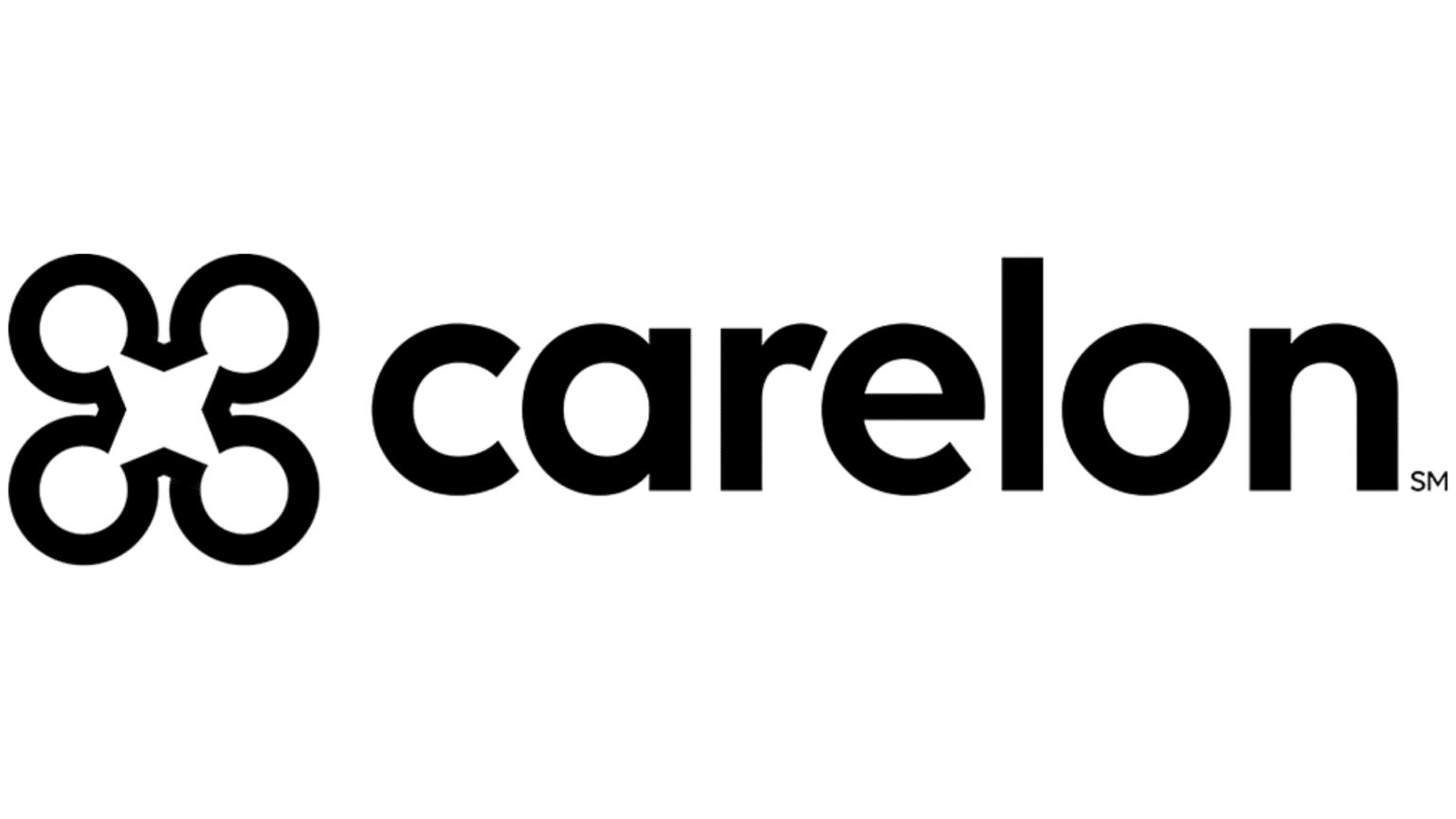


Building a sober living environment at home is a proactive process that involves several deliberate steps. It’s not something that happens overnight, but rather a series of actions and ongoing efforts to transform your living space and lifestyle.
The first step is to honestly evaluate your current home environment. Look at it through the lens of recovery. What aspects of your home currently support sobriety, and what might hinder it? Ask yourself tough questions:
This assessment provides a baseline. It helps you identify the specific challenges you need to address to make your home a recovery-friendly space. Be thorough and honest with yourself. Understanding the current landscape is crucial for planning the necessary changes.
Once you’ve assessed your space, the next critical step is to actively remove triggers and temptations. Triggers are people, places, things, or feelings that remind you of past substance use and can create cravings or the urge to use again. In your home environment, triggers can be particularly potent because of their constant presence and association with past behaviors.
Start by physically removing all substances from your home – alcohol, drugs (including old prescriptions you no longer need), and any associated paraphernalia. Dispose of them safely and responsibly. Don’t leave anything “just in case” or for others. For your recovery, your home needs to be a substance-free zone. This is a non-negotiable step in creating a true sober environment.
Next, identify and remove other physical triggers. This could include specific glasses, bottles, lighters, ashtrays, or even certain decor items or music associated with past use. Decluttering extensively can help remove hidden triggers you might not even be consciously aware of. Clean areas where substances were frequently used to remove residual reminders and energy.
Beyond physical objects, consider environmental triggers. Are there specific times of day or days of the week when you used to use at home? Are there particular activities you associated with using? Once identified, you can plan to change routines during those times or replace those activities with healthier ones. If certain people are triggers, setting boundaries around their visits to your home, or even limiting contact entirely if necessary, is vital for protecting your space and your sobriety.
This step can be emotionally challenging, as it involves confronting aspects of your past. Having support during this process, perhaps from a trusted friend or a therapist accessed through telehealth addiction treatment, can be incredibly helpful. They can provide guidance on identifying triggers and developing strategies for managing the emotions that arise during this process.
For individuals in Orange County or elsewhere seeking flexible treatment options, addressing triggers at home is a core component of programs like Virtual IOP or Outpatient Detox that allow you to remain in your environment while receiving intensive care. Therapists help you develop coping mechanisms specifically for navigating triggers in your daily life.
Emptying your life of substances and triggers creates a void. To make your sober living environment sustainable, you must fill that void with healthy, life-affirming habits and routines. This is about building a new lifestyle that supports well-being and makes sobriety enjoyable and fulfilling.
Establish a consistent daily schedule. This brings structure and predictability. Include regular times for waking up, meals, work or productive activities, recovery-related tasks (therapy, meetings), physical activity, hobbies, and winding down for sleep. A structured day leaves less room for boredom or impulsive decisions that could lead to relapse.
Prioritize physical health. Good nutrition, regular exercise, and sufficient sleep are foundational to both physical and mental well-being in recovery. Incorporate these into your home routine. This could be as simple as preparing healthy meals at home, doing an online exercise class in your living room, or creating a relaxing bedtime ritual.
Engage in activities that bring you joy and a sense of purpose. Rediscover old hobbies or explore new ones. This could be reading, writing, playing music, art, gardening, cooking, or anything that occupies your mind in a positive way and makes spending time in your sober home enjoyable. Scheduling dedicated time for these activities is important.
Incorporate mindfulness or relaxation techniques. Practices like meditation, deep breathing, or yoga can help manage stress, reduce anxiety, and increase self-awareness – all vital skills for navigating cravings and emotional challenges at home. These can often be practiced in a quiet corner of your sober living space.
Building these habits and routines takes time and effort. Don’t expect to implement everything at once. Start small and gradually add more structure and positive activities. Your therapist or counselor in a remote program can help you identify which habits would be most beneficial for you and create a plan for integrating them into your life at home.
By taking these deliberate steps – assessing your environment, removing triggers, and building healthy routines – you actively transform your home into a powerful ally in your recovery journey, making it a true sober living environment.
While creating a supportive home environment is vital, it is rarely sufficient on its own for long-term recovery, especially for those with moderate to severe substance use disorders. Professional guidance and clinical support are cornerstones of effective addiction treatment. The good news is that you can now integrate this crucial professional help directly into your sober living environment at home, thanks to advancements in telehealth.
Addiction is a complex disease involving changes in brain chemistry, psychological patterns, and often underlying mental health conditions. Addressing these complexities requires the expertise of trained addiction specialists. Professional support provides accurate assessment, personalized treatment plans, evidence-based therapies, and medical management when needed.
A therapist or counselor can help you understand the root causes of your addiction, identify your specific triggers and coping mechanisms, teach you healthy ways to manage stress and difficult emotions, and guide you through the process of building a life in recovery. They provide a non-judgmental space to process challenges and develop strategies for preventing relapse. Medical professionals can oversee detoxification safely and manage withdrawal symptoms, and assess the need for medication-assisted treatment (MAT).
Trying to navigate recovery solely on your own within your home environment, no matter how clean and organized it is, can be incredibly difficult and increases the risk of relapse. Professional support provides structure, accountability, expert knowledge, and therapeutic intervention tailored to your unique needs.
For individuals who cannot attend residential treatment or prefer the flexibility of remaining at home, remote or telehealth addiction treatment options offer a powerful alternative. These programs deliver the same high-quality, evidence-based care as in-person programs but through secure online platforms.
An Intensive Outpatient Program (IOP) is a level of care that provides structured therapy multiple days a week for several hours per day. A Virtual IOP Program brings this level of intensity directly into your home. You participate in group therapy sessions, individual counseling, educational lectures, and skill-building workshops via video conferencing. This allows you to receive comprehensive care while living in and actively strengthening your sober environment at home, remaining connected to your family, and potentially continuing work or school.
Telehealth addiction treatment encompasses a range of services delivered remotely, including individual therapy, group therapy, case management, and even medical appointments. This is particularly beneficial for residents in areas like Orange County, California, who may face geographical barriers, transportation issues, or scheduling conflicts with traditional in-person treatment centers. Drug Rehab Programs and Alcohol Rehab Programs are fully accessible through telehealth.
Accessing a remote drug rehab Orange County or alcohol rehab means you don’t have to put your life completely on hold to get the help you need. You can participate in therapy sessions from the privacy and comfort of your own sober living environment, immediately applying the skills and strategies you learn to your daily life. This integrated approach strengthens both your internal resolve and your external environment.
Compassion Recovery Center specializes in providing telehealth addiction treatment, focusing on delivering high-quality, compassionate care directly to you, wherever you are in California, with a strong focus on the Orange County community. We understand the unique challenges of recovery at home and design our virtual programs to provide the necessary structure, support, and therapeutic interventions to help you succeed in creating and maintaining your sober living environment.
Thinking about how professional support can fit into your life? Check insurance coverage for remote treatment options, or contact us to learn more about how our virtual programs can support your home-based recovery efforts.
Two key evidence-based approaches widely used in addiction treatment are Cognitive Behavioral Therapy (CBT) and Medication-Assisted Treatment (MAT). Both of these can be effectively delivered and managed through telehealth, further supporting your efforts to create and maintain a sober living environment at home.
Online CBT Therapy is a powerful therapeutic approach that helps you identify negative thought patterns and beliefs that contribute to substance use. Through online sessions with a therapist, you learn to challenge these thoughts and replace them with healthier, more positive ones. CBT also teaches practical coping skills to manage cravings, high-risk situations, and difficult emotions without resorting to substances. Practicing these skills within your sober home environment allows for immediate real-world application and reinforcement.
For example, if you identify that boredom at home after work is a trigger, your online CBT therapist can help you develop a structured plan of alternative, positive activities to fill that time. If certain family interactions in your home environment create stress, CBT can equip you with communication strategies to navigate those situations more effectively.
MAT treatment online involves the use of FDA-approved medications in combination with counseling and behavioral therapies to treat substance use disorders, particularly opioid and alcohol dependence. MAT can help reduce cravings and withdrawal symptoms, making it easier to focus on therapy and building a sober life. Through telehealth, medical professionals can conduct initial assessments, prescribe necessary medications (often sent to your local pharmacy), and provide ongoing monitoring and support. This allows you to benefit from the medical component of treatment without needing daily trips to a clinic, integrating seamlessly with your efforts to stabilize in your home environment.
Accessing Outpatient Detox services online is also possible, allowing for medical supervision and support through withdrawal in the relative comfort and privacy of your own home, while still being connected to medical professionals who can monitor your progress and ensure your safety. This can be a critical first step before transitioning into a Virtual IOP Program and focusing on therapy.
For individuals dealing with co-occurring mental health conditions alongside addiction, Dual Diagnosis Treatment is essential. Telehealth makes it possible to receive integrated care for both conditions from specialists who understand their complex interaction. Addressing conditions like anxiety, depression, or trauma through online therapy is crucial for sustaining sobriety and overall well-being within your sober living environment.
By combining the intentional creation of a sober home environment with professional support delivered through telehealth – including virtual IOP, online CBT, MAT online, and dual diagnosis treatment – you build a powerful, integrated recovery plan that addresses the physical, psychological, and environmental aspects of addiction. This comprehensive approach significantly increases your chances of achieving and maintaining lasting sobriety right where you live.
In today’s digital age, technology offers incredible tools and resources that can significantly enhance your ability to create and sustain a sober living environment at home. Far from being a distraction, strategic use of technology can provide access to treatment, connect you with support networks, and offer practical tools for managing your recovery day-to-day.
As discussed, telehealth is revolutionizing addiction treatment, making it more accessible and flexible than ever before. For residents of California, especially those in Orange County and surrounding areas, accessing telehealth addiction treatment means you can participate in comprehensive care programs without the need to travel to a physical facility daily. This is essentially accessing virtual rehab California programs from the comfort and safety of your own home.
Compassion Recovery Center offers a range of telehealth services designed to fit into your life. Our Virtual IOP Program provides the intensity and structure of an in-person IOP, including group therapy, individual counseling, and educational sessions, all delivered via secure video conferencing. This allows you to receive critical therapeutic support while actively practicing recovery skills in your real-world environment. If you’re looking for Orange County IOP options that offer flexibility, our virtual program is specifically designed to meet those needs remotely.
Accessing these services online removes many potential barriers to treatment. You save time and money on commuting, you can schedule sessions around work or family obligations, and you receive care in a familiar setting. This integration of professional support directly into your home life strengthens your ability to maintain a sober living environment by providing consistent guidance and accountability.
Virtual platforms are also used for other essential services like Outpatient Detox, where medical staff can monitor your withdrawal symptoms and provide support remotely, and Dual Diagnosis Treatment, allowing you to address both substance use and mental health conditions (Mental Health Treatment) with specialized therapists.
Choosing telehealth addiction treatment means choosing a path to recovery that is flexible, accessible, and directly integrated with your goal of building a lasting sober life at home. If you’re in Orange County and exploring your options, consider how a Virtual IOP Program could be the right fit for you. Verify your insurance online or contact us to learn more about starting your remote recovery journey.
Technology also provides invaluable access to peer support, a cornerstone of recovery. Online support groups and communities offer a safe and accessible space to connect with others who understand what you’re going through. Whether it’s traditional 12-step meetings (like AA or NA) held via video conference, or alternative recovery support groups found on specialized platforms or social media, these online communities provide a sense of belonging, shared experience, and mutual encouragement.
Participating in online meetings from your home reinforces the idea that your sober living environment is a place where recovery is actively pursued. You can attend meetings from anywhere, eliminating barriers like transportation, time constraints, or social anxiety often associated with attending in-person meetings for the first time. These groups offer a crucial outlet for sharing challenges, celebrating successes, and gaining insights from the experiences of others walking a similar path.
Connecting with a sponsor or accountability partner online is also easily facilitated by technology. Regular phone calls, video chats, or messaging can provide consistent support and guidance right in your home environment. These connections combat isolation and provide immediate support when triggers or cravings arise.
Beyond therapy and peer support, a variety of mobile apps and online tools are available to help you manage your recovery on a daily basis. These tools can serve as personal accountability partners and provide helpful resources at your fingertips within your sober living environment.
By leveraging these technological tools, you add layers of support and structure to your home-based recovery efforts. Technology doesn’t replace professional treatment or human connection, but it can significantly augment them, making your sober living environment a more supported and manageable space. Exploring these tools is another way to empower yourself in your recovery journey.
Addiction impacts not just the individual but their entire circle of family and friends. Involving your loved ones in your recovery, especially when you are creating a sober living environment at home, is often crucial for long-term success. Their understanding, support, and willingness to adapt can make a significant difference in the atmosphere and safety of your home.
Family members and close friends can be your strongest allies in recovery. They can provide emotional support, encouragement, and practical help. However, relationships may have been strained by addiction, and dynamics within the household might need to change to support sobriety. Unhealthy patterns of communication or interaction, codependency, or unresolved conflicts can inadvertently create triggers or make maintaining a sober home environment more challenging.
Open and honest communication is the foundation for involving family and friends. Share with them what you are learning in therapy, the challenges you face, and how they can best support you. Be specific about what a sober living environment means to you and the boundaries you need to establish within the home regarding substances, visitors, or activities.
Their role might include participating in therapy sessions with you (when appropriate), respecting the substance-free nature of your home, avoiding bringing up sensitive or triggering topics, and engaging in healthy activities together that support your new lifestyle. Their understanding of addiction as a disease, not a moral failing, is vital. Education about addiction and recovery for family members is a key component of many comprehensive treatment programs.
If you are in a committed relationship, the partnership dynamic plays a significant role in your home environment and recovery. Addiction affects both partners, and navigating recovery together requires mutual understanding, healing, and establishing healthy ways of relating. Virtual couples counseling rehab offers a way for you and your partner to work through the impact of addiction on your relationship within the privacy and comfort of your home.
Couples therapy provides a safe space to address communication issues, rebuild trust, set healthy boundaries as a couple, and develop strategies for supporting each other’s well-being and the shared goal of maintaining a sober home. Through virtual sessions, you can engage with a therapist who specializes in addiction and relationships, allowing both partners to heal and grow together. This is an invaluable resource for strengthening the foundation of your home as a sober living environment.
Often, family and friends want to help but don’t know how, or they may have misconceptions about addiction. Educating your loved ones about the nature of addiction, the recovery process, and the specific challenges you face is crucial. Many treatment programs, including those offered via telehealth, include educational components for families.
Share resources with them, invite them to attend educational workshops (some offered online), and encourage them to seek their own support, such as Al-Anon or Nar-Anon, which are support groups specifically for the family members and friends of people with addiction. When loved ones are informed and feel supported themselves, they are better equipped to support you and respect the boundaries necessary for your sober living environment to flourish.
Involving your family and friends in your recovery journey reinforces your commitment, builds a stronger support system, and helps create a home environment where everyone understands and contributes to the shared goal of sobriety and well-being. It’s a collaborative effort that strengthens the bonds of love and support that are so vital for lasting recovery. If involving your loved ones feels challenging, reaching out to your treatment provider to explore options for family involvement can be a great first step. You can reach out today to discuss how we can support your family dynamic.
Creating a sober living environment at home is an ongoing process, and maintaining motivation and accountability is key to its sustainability. There will be days when your resolve is tested, and having strategies in place to stay focused and accountable will be essential for navigating those challenges successfully.
Recovery is a journey of continuous growth. Setting personal goals provides direction and a sense of purpose. These goals can be related to your sobriety (e.g., celebrating sober milestones), your personal development (e.g., learning a new skill, improving your health), your relationships, or your career. Make your goals specific, measurable, achievable, relevant, and time-bound (SMART goals).
Tracking your progress towards these goals, including your days of sobriety, provides tangible evidence of how far you’ve come. This can be incredibly motivating, especially during difficult times. You can use a journal, a calendar, or one of the sobriety apps mentioned earlier to track your progress. Seeing your accomplishments visually reinforces your commitment and reminds you of your strength.
Celebrate milestones along the way – your first week sober at home, your first month, six months, a year. Acknowledging these achievements, perhaps with your support network, reinforces positive behavior and provides encouragement to continue. These celebrations don’t need to be elaborate; they can be simple acknowledgments of your hard work and dedication.
Having someone to whom you are accountable significantly increases your chances of staying sober. A sponsor, typically someone with more experience in recovery, provides guidance and support through a program like Alcoholics Anonymous or Narcotics Anonymous. They share their experience, strength, and hope, and help you work through the steps.
An accountability partner can be a trusted friend, family member (if the dynamic is healthy), or fellow recovery community member. This is someone you check in with regularly, honestly sharing your struggles and successes. Knowing you have to report back to someone can provide an extra layer of motivation and make you think twice before making a decision that could compromise your sobriety or your sober living environment.
Connecting with a sponsor or accountability partner is easily done remotely through phone calls, text messages, or video chats. This allows for consistent support regardless of geographical distance, integrating seamlessly with your home-based recovery efforts and providing immediate access to guidance when you need it most.
Acknowledging and celebrating your progress is a vital part of maintaining motivation. Each day, week, month, and year of sobriety is a significant achievement that deserves recognition. These celebrations reinforce positive change and provide a sense of accomplishment. Plan non-substance-related ways to reward yourself and celebrate these milestones.
This could involve treating yourself to something you enjoy, taking a trip, spending quality time with supportive loved ones, or engaging in a favorite hobby. Sharing these celebrations with your sponsor, accountability partner, or family reinforces your commitment and allows them to celebrate your success with you. These positive experiences build happy, sober memories associated with your home and your new life, further strengthening your sober living environment.
Maintaining motivation and accountability requires conscious effort and the utilization of available resources. By setting goals, tracking progress, connecting with support, and celebrating your achievements, you build the internal strength necessary to complement the external support of your sober home environment and professional care.
Recovery is not always a linear path. There will be challenges, setbacks, and moments when maintaining a sober living environment at home feels difficult. Learning how to identify, anticipate, and overcome common obstacles is crucial for long-term success.
Relapse is a potential part of the recovery journey for many individuals. It doesn’t mean failure; it means a need to reassess your strategy, strengthen your support, and recommit to your recovery. Living in your home environment can sometimes present more immediate access to triggers or challenging situations than a controlled residential setting, which can increase the risk if not managed proactively.
The most important thing if a setback occurs is to not give up. Reach out for help immediately. Contact your sponsor, accountability partner, therapist, or a trusted loved one. Don’t isolate. Be honest about what happened and identify the circumstances that led to the setback. This information is invaluable for strengthening your relapse prevention plan.
Your sober living environment at home might need adjustments after a setback. Were there unaddressed triggers? Were boundaries not respected? Did you neglect your routines or self-care? Use the experience as a learning opportunity to reinforce your home environment’s protective factors and strengthen your strategies for managing high-risk situations.
Professional support is critical after a relapse. Your treatment team can help you process what happened, adjust your therapy plan, and provide the necessary support to get back on track quickly. Compassion Recovery Center offers ongoing support and is here to help individuals navigate setbacks with compassion and expert guidance. Get help now if you’ve experienced a setback.
Stress is a major trigger for substance use. Learning healthy ways to manage stress within your sober living environment is essential. Identify your stressors – work pressure, financial worries, relationship issues, health problems – and develop coping strategies that don’t involve substances. This could include exercise, mindfulness, hobbies, talking to a friend or therapist, spending time in nature (if accessible), or engaging in relaxation techniques.
Co-occurring mental health conditions like depression, anxiety, PTSD, or bipolar disorder are common among individuals with substance use disorders. Unmanaged mental health issues significantly increase the risk of relapse. As mentioned previously, receiving integrated treatment for both conditions through Dual Diagnosis Treatment is vital. Telehealth services make it easier to access Mental Health Treatment consistently from your home, ensuring that these underlying issues are addressed as part of your overall recovery plan.
Recognize the signs that your stress levels are too high or that your mental health is struggling. Don’t wait until you’re overwhelmed to seek support. Make stress management and mental health care proactive parts of your daily routine in your sober living environment. This might involve scheduling regular therapy sessions, practicing mindfulness daily, ensuring you get enough sleep, and maintaining your physical health.
One of the most important skills in recovery is knowing when and how to ask for help. There will be times when you feel overwhelmed, lonely, or strong cravings. Having a plan for seeking help in those moments is crucial. This involves identifying your go-to support people (sponsor, accountability partner, trusted friend/family) and having their contact information readily available. It also means knowing when to reach out to your professional support team – your therapist, counselor, or a crisis hotline if needed.
Don’t let shame or fear prevent you from asking for help. It is a sign of strength, not weakness, to recognize that you need support. Your sober living environment should be a place where you feel safe seeking help, and your support network should be accessible even when you are at home. Remember, connecting with someone, even for a brief conversation, can make a significant difference in navigating a difficult moment.
If you are in Orange County or anywhere in California and need support for addiction or mental health, Compassion Recovery Center is here to help. Our telehealth addiction treatment programs are designed to provide accessible, compassionate care right to your home. Don’t hesitate to contact us to explore your options and get the support you need to maintain your sober living environment and thrive in recovery.
Creating and maintaining a sober living environment at home is a powerful and achievable goal for individuals seeking recovery from drug and alcohol addiction. While challenges exist, particularly in navigating familiar surroundings and potential triggers, the ability to receive comprehensive professional support through telehealth has made this path more viable and effective than ever before.
We’ve discussed the core components: transforming your physical space into a clean, organized sanctuary; building a robust network of emotional support; and establishing clear boundaries and consistent, healthy routines. These elements work together to build a foundation for sobriety within your home.
Crucially, integrating professional guidance through remote treatment options like Virtual IOP, telehealth addiction treatment, Online CBT therapy, and MAT treatment online provides the clinical expertise and structured therapy necessary to address the underlying causes of addiction and develop effective coping strategies. Leveraging technology for accessing therapy, support groups, and recovery tools further strengthens your ability to stay connected and accountable.
Involving your family and friends, and utilizing resources like Virtual couples counseling rehab, helps heal relationships and ensures your loved ones are part of your support system, contributing positively to your home environment. Maintaining motivation through goal setting, tracking progress, and celebrating milestones keeps you focused, while preparing for and knowing how to overcome common obstacles like stress, mental health challenges, or setbacks is essential for long-term resilience.
Creating a sober living environment at home isn’t just about avoiding substances; it’s about building a life you don’t need to escape from. It’s about finding peace, stability, and fulfillment right where you are. With the right tools, support, and commitment, your home can become a powerful anchor in your recovery journey.
If you or a loved one is struggling with addiction and believes that a flexible, remote treatment program combined with building a strong home environment is the right path, help is available. Compassion Recovery Center specializes in providing compassionate, evidence-based telehealth addiction treatment, including Virtual IOP Program specifically designed for individuals in California, serving the Orange County area and beyond. We understand the unique needs of those seeking remote drug rehab Orange County options and are here to support you every step of the way.
Taking the first step can be the hardest, but you don’t have to do it alone. We are here to provide the support and guidance you need to transform your life and your home. Learn more about how our virtual programs can help you create and maintain a thriving sober living environment. Verify your insurance online to understand your coverage for telehealth treatment, contact us for a confidential conversation about your needs, or start your free assessment today. Your journey to a sober, fulfilling life at home begins now.
Researchers and doctors are making exciting progress in understanding mental health and addiction—bringing hope to millions.
Genetics can play a part, but they don’t decide your future. Mental health is shaped by many factors, and healing is always possible.
The right treatment often includes a mix of therapy, medication, and compassionate care—tailored just for you.
We are 100% in Network Provider. Most of our clients pay $0 out of pocket.


